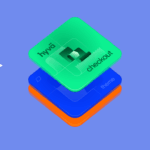What are Account-to-Account Payments?
Account-to-Account (A2A) payments are payments where money is moved directly from one account (a customer or payee account) to another (a merchant or service provider account) without any intermediaries or payment instruments, such as cards. A2A payments are not new and have been traditionally used by consumers to make regular payments, such as direct debits or bank transfers.
But there has been an upsurge in A2A payments, thanks to a maturing open banking framework in Europe, demand for instant payments, and consumer behavior shifts driven by the pandemic. And now they seem poised to surpass cards to become the preferred payment method for consumers and businesses. According to research from Accenture, A2A transfers in Europe accounted for around 13% of checkouts in the last 12 months.
iDEAL in The Netherlands is a great example of a well-established A2A payments scheme. The scheme processes over a billion transactions every year and accounts for over two-thirds of Dutch e-commerce payments!
A2A payments can be either push or pull payments. Push payments like bank transfers or instant payments are used for transferring one-off sums. Pull payments are when a merchant withdraws money from a customer’s account, for example, a recurring direct debit mandate to pay for a subscription service. Pull payments require prior consent from the customer.
What is the outlook for A2A Payments in Europe?
The Worldpay Global Payments Report predicts that by 2023, A2A payments will account for 20% of all e-commerce payments in Europe. Not surprising, given that A2A payments are an attractive option for retailers because of their lower costs and faster settlements. A2A payments also remove the need for payment guarantees or card processing fees, which are central in card networks, making them ideal for merchants.
Consumers also seem to be becoming aware of the convenience offered by A2A payments. A recent survey found that more than half (54%) of UK consumers are willing to pay A2A via open banking if given that choice.
How Open Banking Has Impacted A2A Payments
Open banking is the process by which banks and other financial institutions access, use, and share customer financial data – with the explicit consent of customers. Open banking aims to improve and introduce financial products and services that benefit customers and increase competition and innovation in the industry.
A2A payments use open banking APIs that connect a bank with third-party providers, enabling the direct movement of money from a payer’s account to a merchant’s with the payer’s permission. Customers can make A2A payments at points of purchase instead of card payments, which is much faster and convenient and does not involve excessive data entry while doing away with additional card processing fees. Open banking rails also allow consumers to shop using digital wallets, another popular payment method in Europe.
The Benefits of Adopting A2A Payments
Easy Payment Acceptance
With A2A payments, there are no intermediaries and no need to update card details multiple times. Merchants can easily accept instant one-off payments and recurring payments from desktops, apps, and mobile browsers. This saves time and lowers processing costs for merchants.
Great Customer Experience
Businesses can use A2A payments along with open banking technology to offer customers a friction-free experience. With A2A payments, customers do not have to worry about forgetting their card details or updating them multiple times. Customers can also pay A2A at points of purchase, which is much faster and convenient and does not involve unnecessary data entry. This creates a more seamless and embedded experience.
SCA compliance
A2A payments are based on open banking technology and use multi-factor authentication as mandated by PSD2. Hence, merchants using A2A payments will be SCA compliant and face lesser fraud and chargeback-related losses, all without compromising on their checkout experience.
Meet the changing needs of consumers
Consumer preferences have rapidly evolved amid the pandemic. The demand for convenient and faster payment methods continues to drive the shift to digital payment methods from traditional ones. Consumers today desire easy, secure, and flexible payments that are embedded into their shopping journey. According to the OBIE in the UK, over half of Britons are now using Open Banking-powered apps regularly. Additional research from GoCardless shows that bank debit is the most preferred subscription payment method of consumers in the UK, France, and Germany.
Final Thoughts
We are only beginning to see the potential of A2A payments. As open banking picks up across Europe and globally, A2A payments will change the way consumers and businesses make payments. Nine out of ten Gen Z’s live in emerging market nations, and their purchasing power will heavily influence policies and investments that align with their habits and demands. Also, cross-border transactions are rising, and so are the fees for card payments. Businesses that are looking to reach more customers and expand globally have to be able to make transactions friction-free. And A2A payments could most possibly be the next gamechanger to help them achieve this.
Reach out to us to know more about how to get the best out of your payments and fast-track your business growth.
Jose Augustine is the Chief Business Development Officer at Novalnet with extensive experience in European payment industry and a knowledge powerhouse.












